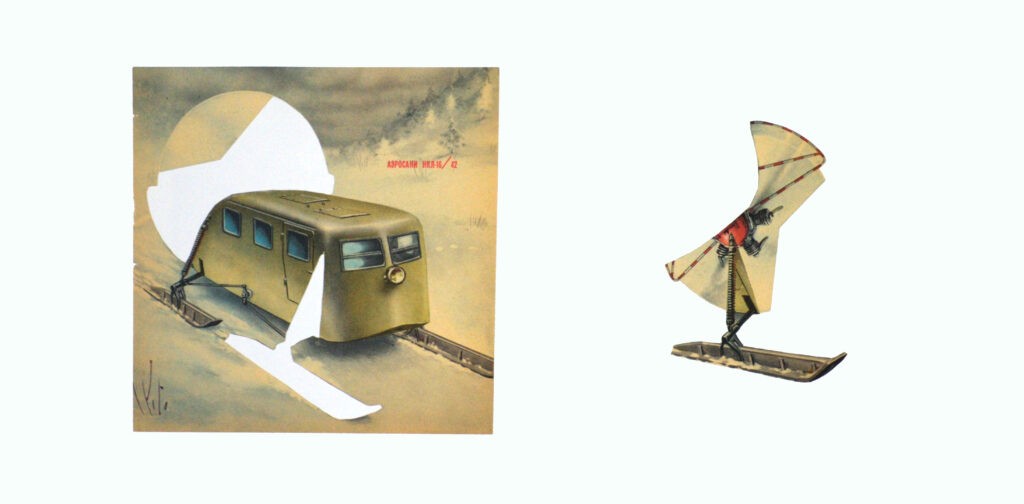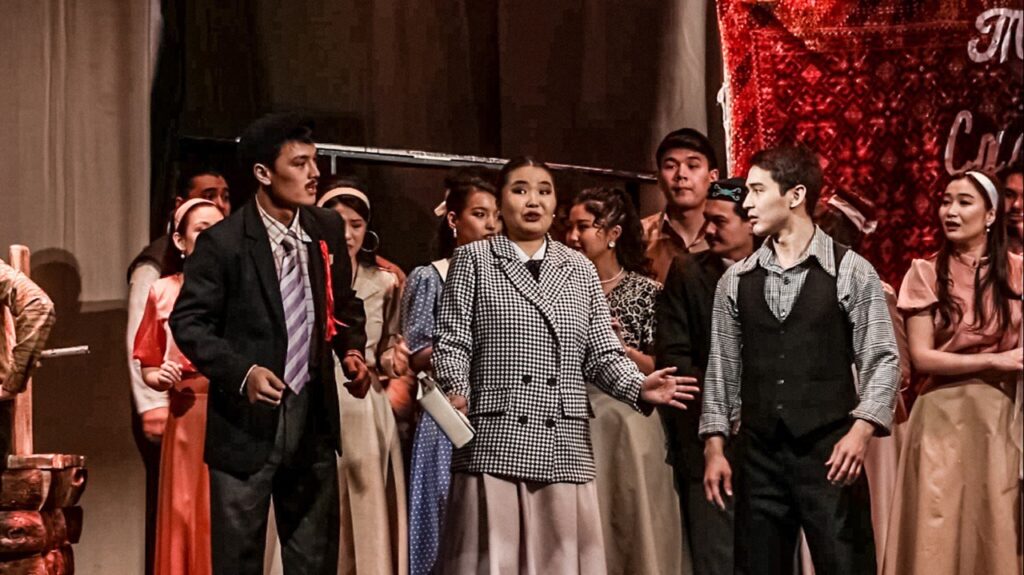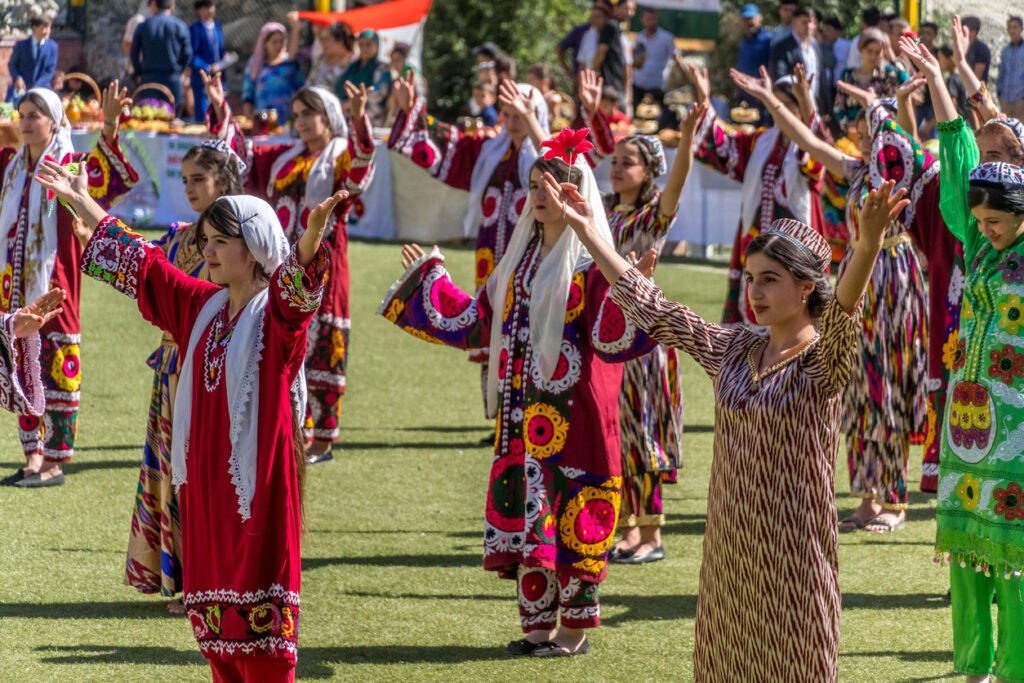Sara Raza is a litmus test for the spirit of the times in the shape of an art curator. In simple terms, art crowds can count on her direction for the Tashkent Centre for Contemporary Art (CCA) to bring the most pressing issues in contemporary art to the foreground.
Indeed, the author of the book Punk Orientalism – and the namesake curatorial studio – has been just appointed as Artistic Director and Chief Curatorial Director of the CCA Tashkent, set to open in September 2025.
It’s a strategic move for the Centre, which has aspirations of becoming a global arts and culture hub and is aiming at international artistic and creative exchanges, which include residencies, exhibitions, workshops, and educational programmes, and contributing to Uzbekistan’s cultural ecosystem.
Transversal in her curatorial approach, London-born, New-York-based Raza is coming from a mixed Central Asian/Middle Eastern background, but she is also steeped in the heart of the Western art system, in institutions such as the Guggenheim – having taken care of a project called UBS MAP Global Art Initiative, curating the Middle East and North Africa section.
Over the years, the curator has worked with artists from Asia, the Caucasus, the Middle East, Europe, and North America, and has curated shows at the Mathaf: Arab Museum of Modern Art in Doha and the Rubin Museum of Art in New York, but it is truly her book, Punk Orientalism: The Art of Rebellion, which brought a fresh approach to the sometimes highly academic field of art criticism.
For Raza, artists from the former-Soviet countries and beyond hold a strong punk DIY ethos, by which they counter the Orientalist gaze they have always been subjected to by both the West and Russia. Their art is often a form of bricolage, an unexpected connection of disparate ideas used to create something entirely new.
Will she bring this original approach to the direction of the museum, too? TCA spoke with Raza to find out about how she’s planning to foster cultural and educational partnerships and to support local, regional, and international artists while engaging with Uzbekistan’s rich cultural heritage.

Centre for Contemporary Art Tashkent Artist Residencies; image: Namuna
TCA: The Centre for Contemporary Art in Tashkent is poised to become a major hub for artistic discourse in Central Asia. As its first Artistic Director and Chief Curator, how do you envision defining the institution’s identity from the ground up?
My vision for CCA is less of a ground up approach, but rather one that builds on an historical and visual cultural foundation established in the 20th century that included a robust relationship with artists, intellectuals and others from the Global Majority World [a collective term for people of African, Asian, indigenous, Latin American, or mixed-heritage backgrounds, who constitute approximately 85% of the global population].
This included relationships between Harlem Renaissance figures [The Harlem Renaissance was an African American cultural movement that flourished in the 1920s and had Harlem in New York City as its symbolic capital], and a film festival and program that included Asia, Africa, and Latin American filmmakers, which lasted from the 1960s-80s in Tashkent. All of this bodes very well for my curatorial work and can be reimagined in interesting and dynamic ways.
TCA: Your curatorial work has consistently challenged dominant art history narratives. How do you see the CCA in Tashkent playing a role in reshaping global conversations about contemporary art?
Reimaging some of the historical and global connections that I mention above in new and fresh ways through the lens of contemporary artists is something I’m very much looking forward to developing. Equally, extending beyond exhibitions to programming, learning, and outreach through our forthcoming research library, public programming, and indoor/outdoor cinema to allow for regional collaboration is also on the agenda.

Centre for Contemporary Art Tashkent Artist Residencies; image: Namuna
TCA: You’ve described the CCA as an “intersectional space for cultural exchange.” How do you balance the need for deep engagement with local artistic traditions while ensuring the Centre resonates internationally?
In this context, intersectional also means via ideation, not necessarily just material cultures and traditions. Given that there is already a global history, it’s instead a matter of reconnecting and reconfiguring new pathways and other ways of understanding local/global scales, which are also variable since this gap is shrinking and technology is advancing.
TCA: Would you say that Central Asia is experiencing a cultural renaissance? And if so, what excites you most about the current Uzbek and Central Asian art scene?
There is a lot of excitement across the region, owing to its young population. Inside Uzbekistan, spearheading many projects is the chairperson of Art and Culture Development Foundation (ACDF), Gayane Umerova who has mapped a cultural path that includes not only extending the invitation to me to lead the CCA but also the launch of the Aral Culture Summit in Nukus [April 2025] and the forthcoming Bukhara Biennial in September, as well as Uzbekistan PavilionTCA: at the Expo 2025 Osaka and the Venice Biennale of Architecture, amongst other arts and cultural activities.

Centre for Contemporary Art Tashkent Artist Residencies; image: Namuna
TCA: Will you maintain the approach outlined with the book and the curatorial studio Punk Orientalist in your programming for the Centre?
In my curatorial monograph for Punk Orientalism: The Art of Rebellion – which is culled from my curatorial practice – I explore Eastern forms of Orientalism related to art and ideas from the former USSR from a post-Soviet and post-colonial standpoint, spanning Central Asia, the Caucasus, the Arab world, Turkey, and Iran. My practice is very much artist-led, and the book highlights the cross-pollination of art and ideas. It reflects upon thematic curatorial patterns, which will continue to inform the work I do, which relies on shared cultural and intellectual labor with artists, architects, technologists, and thinkers.
TCA: Your curatorial work often engages with themes of post-colonialism, migration, and memory. In a rapidly shifting geopolitical landscape, do you see your role at the CCA as inherently political? If so, how?
I wouldn’t say that my role is political with a capital “P,” as it’s more driven in art historical narratives and works to illuminate artistic practices, sometimes involving more complex forms of interaction and oscillation between institutions, artists, and objects.
TCA: How will you ensure that the CCA remains a dynamic, living space that truly connects with the people of Tashkent?
CCA is in a central location adjacent to the Westminster International University in Tashkent, with whom we’re developing an MA program in Creative Industries. Students pursuing curatorial studies will have the opportunity to integrate and learn from the artists, exhibitions, and programs at CCA. This is also a pipeline into employment for the next generation of practitioners. With this important demographic in mind, CCA will offer a broad spectrum of programs and experiences catering to all communities across the city.

Centre for Contemporary Art Tashkent Artist Residencies; image: Namuna
TCA: Do you plan to create an environment where artists feel empowered to push boundaries, even within an institutional framework?
CCA launched its residency program earlier this year, which is an essential feature of CCA’s programming in that it allows space for artists to research and make new work as well as connect with craftspeople and other artists. Some of the work that artists produce during their residencies will be featured in the forthcoming exhibitions as well, which I hope will contribute to the program’s overall dynamic environment.
TCA: You have often spoken about your deep connection to Central Asia and their communication with the broader region. How does this personal history inform your curatorial vision for CCA, and do you see this role as a kind of homecoming?
I’ve had the fortune of working in Central Asia and internationally for two decades; my entire thinking is based on a global framework. I’m also of mixed ethnicity of Iranian and Central Asian origin, which includes ancient Uzbekistan, and was born in London, and am currently based in New York where I teach at both NYU and Yale. My approach to connection is through remixing, reordering, and rearranging art and ideas from different 20th and 21st-century periods horizontally across Central Asia, the Caucasus, the Middle East, and North Africa. CCA offers a space to consolidate two decades of professional practice and personal and autobiographical.
TCA: With the grand opening set for September 2025, what should audiences — both in Uzbekistan and globally — expect from the CCA’s inaugural programming? Can you hint at any upcoming exhibitions, commissions, or collaborations that will set the tone for the Centre’s future?
I can say that the artist-led direction will be very significant in all aspects of CCA’s curatorial approach. From illuminating the Studio KO-designed renovation to re-evaluating histories and programming, the artist’s hand is an important feature.








